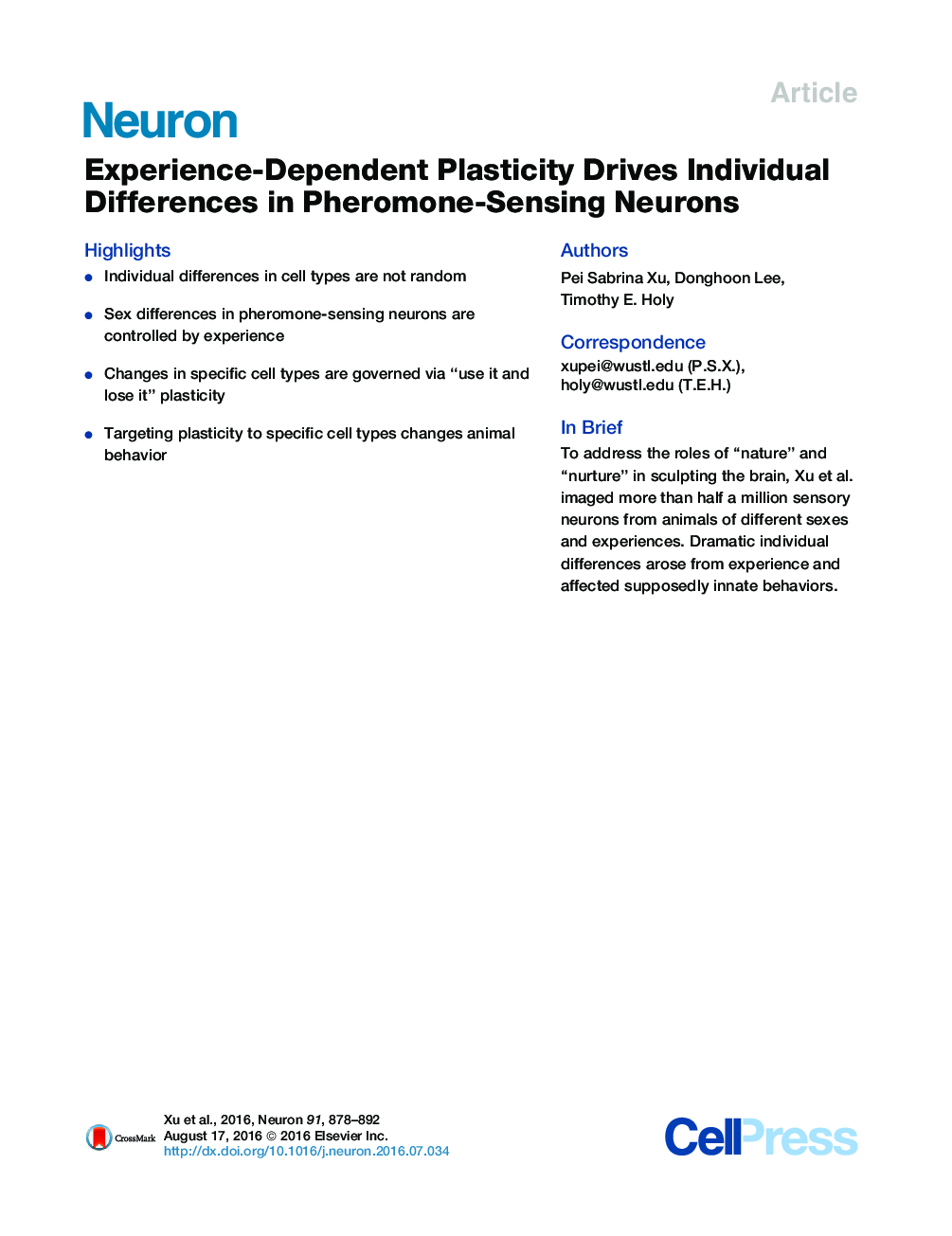| Article ID | Journal | Published Year | Pages | File Type |
|---|---|---|---|---|
| 4320665 | Neuron | 2016 | 15 Pages |
•Individual differences in cell types are not random•Sex differences in pheromone-sensing neurons are controlled by experience•Changes in specific cell types are governed via “use it and lose it” plasticity•Targeting plasticity to specific cell types changes animal behavior
SummaryDifferent individuals exhibit distinct behaviors, but studying the neuronal basis of individuality is a daunting challenge. Here, we considered this question in the vomeronasal organ, a pheromone-detecting epithelium containing hundreds of distinct neuronal types. Using light-sheet microscopy, we characterized in each animal the abundance of 17 physiologically defined types, altogether recording from half a million sensory neurons. Inter-animal differences were much larger than predicted by chance, and different physiological cell types showed distinct patterns of variability. One neuronal type was present in males and nearly absent in females. Surprisingly, this apparent sexual dimorphism was generated by plasticity, as exposure to female scents or single ligands led to both the elimination of this cell type and alterations in olfactory behavior. That an all-or-none apparent sex difference in neuronal types is controlled by experience—even in a sensory system devoted to “innate” behaviors—highlights the extraordinary role of “nurture” in neural individuality.
